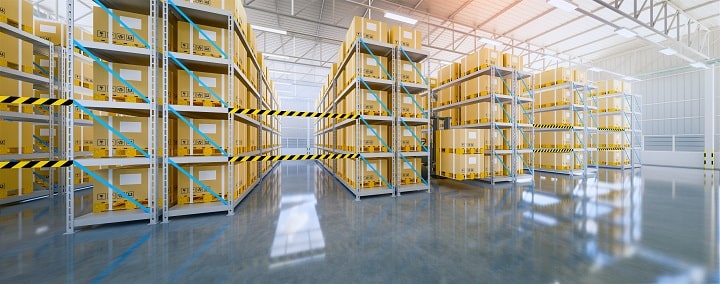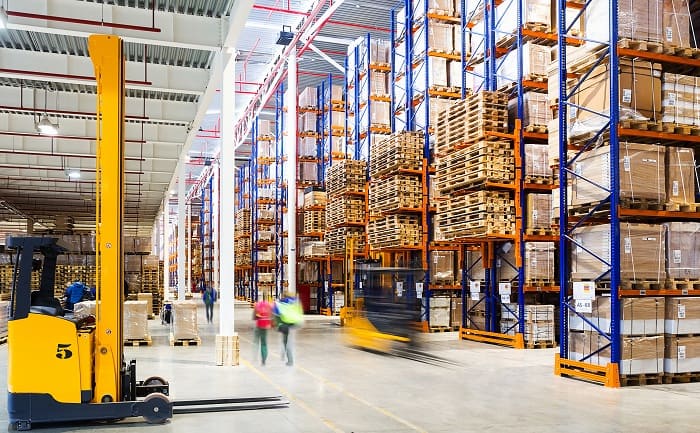Industrial warehouse and storage areas require attention to safety for anyone who works and walks through them every single day. The cost associated with industrial shelving accidents can be quite expensive and disastrous. While various forms of insurance may help cover some of the costs, you may still need to bear some of it, along with the potential reputational damage to your brand.
Industrial accidents caused by unsafe industrial shelving and operations can also result in a visit from the safety regulatory bodies, particularly the Occupational Safety and Health Administration (OSHA), which can result in heavy fines. Even if it wasn’t your fault, the long paperwork can be burdensome and time-consuming.
Thus, you want to be proactive in ensuring the safety of your industrial shelving to prevent disasters from occurring. This article covers safety and preventive maintenance tips across all types of industrial pallet racking and shelving to create a safe environment.
-
Pay Attention To Installation And Maintenance
Most common industrial shelving and rack accidents occur due to improper installation or assembly. If you’re installing your shelving, you want to review documentation from the manufacturer. However, most reliable storage solution manufacturers also provide installation services for their storage products. This way, you don’t have to worry about improperly assembled shelving that may cause an accident.
After installation, you also need to be vigilant about its regular maintenance schedule. Again, a reliable provider of shelving solutions can provide advice on this, but you can also do your part by outlining a maintenance checklist for your industrial shelving.
-
Secure The Tall Shelves
According to OSHA, the maximum height for a freestanding shelf is 15 feet. In general, employees need to secure their tall shelves, particularly if they contain heavy or harmful objects. Shelving should be bolted to each other as well as on the floor and wall. Also, shelves should have a depth-to-height ratio of 1:6 or lower as securing industrial shelving with inadequate depth can be difficult.
-
Put Heavy Loads To Lower Shelves
Even if you have well-secured industrial shelving and pallet racks, these can become extremely hazardous if improperly loaded.
Thus, it’s best practice to always load heavier items or pallets on the lower shelves. Don’t worry about the space being used inefficiently, safety should always be prioritized. Meanwhile, move the lighter objects to the higher shelves. Not only can this setup help with easier loading and unloading of items, but it also ensures the safety of workers.
-
Follow Weight Limits
It’s easy to convince yourself that a few pounds squeezed into an already overloaded shelving won’t cause harm. However, putting too much weight on shelving beyond their recommended weight limit is a sure way to set your industrial warehouse up for catastrophe.
Even if the racks and shelving appear to be holding the weight without noticeable damage, the additional strain puts the whole structure at risk of sudden collapse. Also, it causes additional wear and tear on key parts causing them to degrade much faster.
So, enforce weight limits and check for any overloaded racks in your warehouse. You can come up with efficient ways to ensure employee compliance with safety protocols. If there are any doubts about the recommended weight capacity of the shelving, call your manufacturer.
-
Training And Re-Training Workers
Your workers are the ones most at-risk of any industrial shelving accident. However, worker mishandling can also easily contribute to accidents, injury or damage.
To prevent this, you need to invest in employee training. You need to make sure that your workers are regularly briefed on how to properly load, unload and transport inventory across the shop floor. If they’re using heavy machinery, they should also be trained in how to operate these pieces of warehouse equipment.
In general, re-training is only recommended for those involved in an accident or who have witnessed using heavy machinery unsafely. However, it won’t hurt you to re-train all employees in general safety procedures, at least once a year. This may be tiresome for your experienced and veteran workers, but it helps ensure the safety of your industrial warehouse as a whole. Moreover, this is essential whenever new equipment is acquired.

Takeaway
Safety is one of the most important things in managing industrial warehouses and storage areas. The risk of injury and damage is high, but the above tips can go a long way in reducing that risk. So, follow these steps to save you from the headaches of dealing with workers’ injuries and damage to goods that can significantly cost your business.




































